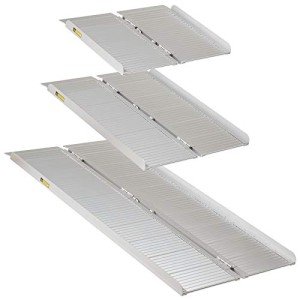See What Wheelchair Access Ramp Tricks The Celebs Are Using
페이지 정보

본문
Wheelchair Access Ramps: A Step Towards Inclusivity
In today's world, ease of access has ended up being a crucial element of guaranteeing everyone, no matter physical ability, can navigate environments easily and independently. Among the essential parts for improving accessibility is the wheelchair access ramp. This article checks out the value of wheelchair ramps, their design, guidelines, and offers some regularly asked questions to help comprehend their significance.
The Importance of Wheelchair Access Ramps
Wheelchair ramps work as a bridge for individuals with mobility difficulties, enabling them to access buildings, pathways, public transportation, and numerous locations without physical barriers. Here are some essential reasons that Wheelchair Ramp Portable access ramps are vital:

- Promote Inclusivity: Ramps enable people with specials needs to take part totally in societal activities.
- Compliance with Regulations: Many nations have laws that require public structures and spaces to be available.
- Improved Safety: Ramps reduce the danger of mishaps that might take place when browsing stairs or uneven surfaces.
- Improved Mobility: They provide convenient access for individuals using wheelchairs, walkers, or other assistive devices.
Design Considerations for Wheelchair Ramps
When designing a wheelchair ramp, different elements need to be taken into consideration to guarantee efficiency and security. Below are some necessary style aspects:
| Design Element | Suggestion |
|---|---|
| Slope Ratio | A maximum slope of 1:12 (4.76 degrees) is suggested for ease of access. |
| Width | At least 36 inches broad for basic wheelchair access. |
| Surface Material | Non-slip materials must be used to prevent mishaps, even in wet conditions. |
| Landings | Flat landings at the top and bottom of ramps ought to be at least 60 inches long. |
| Curbs | 2- to 4-inch curbs can assist prevent wheelchairs from rolling off the sides of the Disability Ramp. |
| Handrails | Handrails must be put at 34 to 38 inches in height on both sides of the ramp. |
Laws and Standards
In the United States, the Americans with Disabilities Act (ADA) sets clear standards for wheelchair ramps to guarantee public ease of access. Similar guidelines exist in other countries also. Here are some essential guidelines from the ADA concerning wheelchair ramps:
- Slope: A ramp needs to have a maximum rise of 30 inches for every 1 foot of ramp run.
- Width: Ramps must be at least 36 inches wide, although they can be broader for much better accessibility in high-traffic areas.
- Landings: Must be flat and at least 60 inches in length for both the top and bottom of the ramp.
- Surfaces: The surface area needs to be steady, company, and slip-resistant.
- Handrails: Ramps that are more than 6 inches high must consist of handrails.
Types of Wheelchair Ramps
There are numerous kinds of wheelchair ramps tailored for particular requirements and environments. Here are some common types:
Permanent Ramps: These are developed from materials such as concrete, wood, or metal and are created for long-lasting usage. They are typically utilized in public structures and homes.
Portable Ramps: Lightweight and easy to carry, portable ramps can be used briefly and are ideal for individuals who need a ramp for brief durations.
Folding Ramps: These ramps fold in the middle, making them easy to shop and transportation. They are best for those who require access to various areas.
Limit Ramps: Used mostly for entrances, these ramps help remove small vertical barriers. They are essential for homes and structures where door limits provide a challenge.
Modular Ramps: Made from prefabricated sections that can be assembled on-site, modular ramps can be tailored for particular structure requirements and can work in different settings.
FAQ About Wheelchair Access Ramps
1. Who is accountable for setting up wheelchair ramps?
The duty for setting up wheelchair ramps can differ. In public spaces, it is typically the responsibility of building owners or municipalities to adhere to availability guidelines. In domestic spaces, property owners are accountable for installation.
2. Exist monetary support programs for installing ramps?
Yes, there are numerous support programs, including government funding and non-profit organizations, that assistance people manage wheelchair ramp installations. It's worth looking into local choices.
3. How do I keep a wheelchair ramp?
Frequently inspect the Handicap Ramp for cracks, protruding nails, or loose surfaces. Keeping it tidy and free from particles or snow during winter season is important for ensuring security.
4. Will a wheelchair ramp affect property worth?
While installing a wheelchair ramp may not directly increase home value, it can make a residential or commercial property more enticing to purchasers seeking ease of access alternatives.
5. How can I find a qualified specialist to set up a wheelchair ramp?
Start by searching for contractors who focus on ease of access building. Check references, evaluations, and reviews to guarantee they have experience in building certified ramps.
Wheelchair access ramps are crucial for enhancing accessibility and promoting inclusivity for individuals with mobility obstacles. By sticking to develop standards and regulations, these ramps can provide safe and simple access to structures and public areas. As society relocations towards higher inclusivity, the existence of wheelchair ramps acts as a testimony to our dedication to breaking down barriers and opening doors for everybody.
Whether as a little addition to a home or part of a bigger public infrastructure job, these ramps represent a significant stride towards a more accessible world for all.
- 이전글Lexus Replacement Key Cost Tools To Ease Your Everyday Lifethe Only Lexus Replacement Key Cost Trick That Every Person Should Be Able To 25.11.13
- 다음글What's The Job Market For Licensed Window Doctor Professionals? 25.11.13
댓글목록
등록된 댓글이 없습니다.
